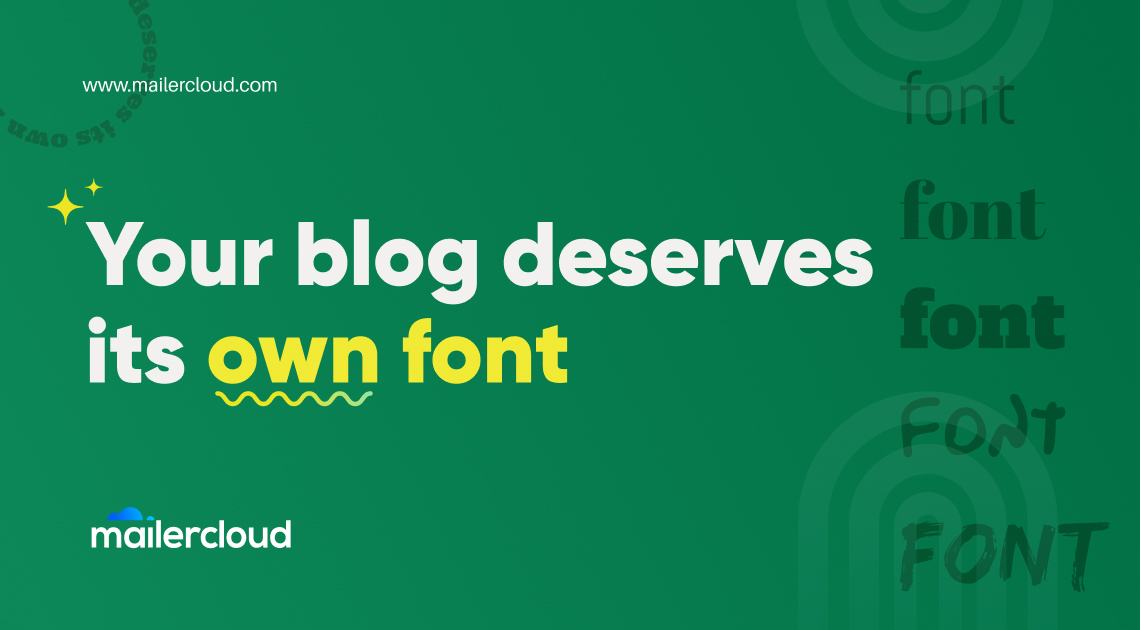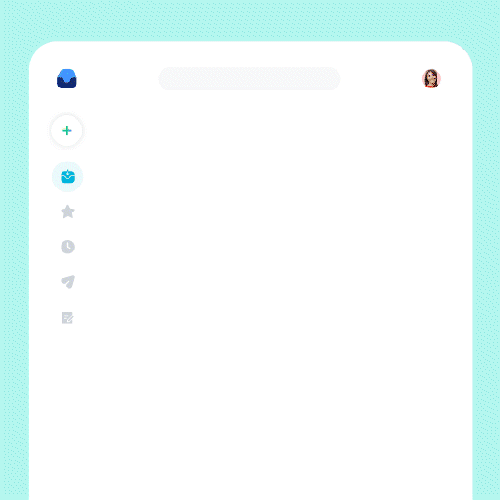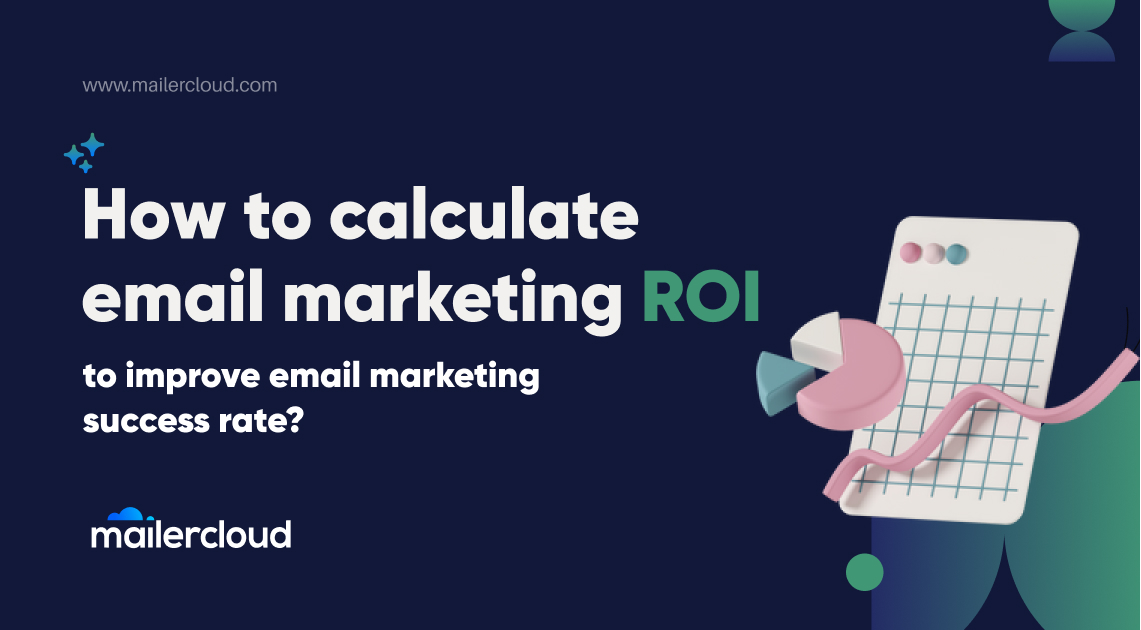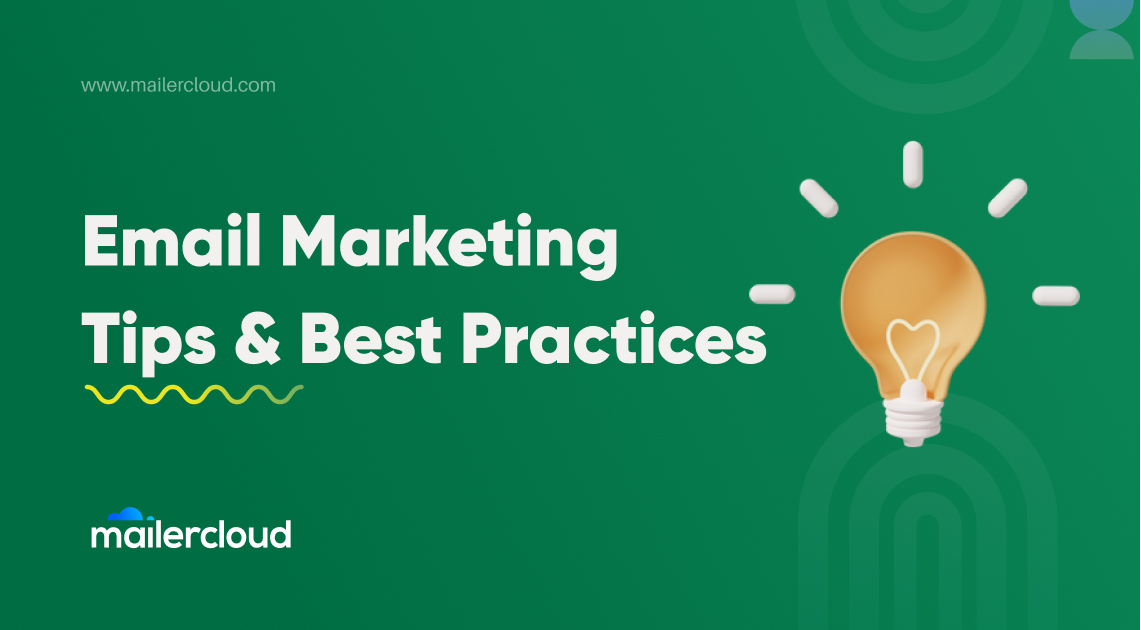Regarding email, there is yet to be a definitive answer as to what Font is the best. It depends on the recipient, the content of your email, and other factors.
However, you can follow some general guidelines to ensure your message looks professional and is easy to read.
It’s best to stick with the 12-point font for the body of your message and 14-16 points for headers or titles. If you’re writing an email to someone who may not be familiar with technology, use a larger font size (14-16), so they can easily read it.
Using the appropriate Font selection in the marketing toolkit is essential to get the intended results. I’d like you to please read why it is crucial to choose the perfect Font for emails. Indeed, you can learn how to pick the ideal Font for your email campaigns for the best results.
Table of Contents
Why does the Font Size Matter for Email Marketing Campaigns?
Font size is essential in email marketing campaigns for a variety of reasons:
- It helps create structure and hierarchy in the email, making it easier for readers to identify the essential points quickly.
- Different sizes can help draw attention to some aspects of the message or make certain words stand out more.
- Choosing a size that is too small or too large can make it easier for recipients to read the message, which could lead them to delete the email without reading it.
So, it’s essential to carefully consider what size is used in an email marketing campaign, as this will help readers understand and engage with your message.
Why does Choosing the best fonts for email matter?
When choosing the Font for email newsletters, there are a few things to consider. Depending on the email client and marketing campaign, one Font may work better.
Generally speaking, serif fonts like Times New Roman, Georgia, and Garamond are more famous for email newsletters. Sans serif fonts like Arial and Helvetica are also good choices for email newsletters. Of course, using a font that is easy to read and looks good when viewed from any size device is essential.
To ensure your newsletter looks its best across all devices, choose a well-known and popular font with a style that fits your brand image. A few popular fonts for email marketing campaigns include Open Sans, Roboto, and Lato. Remember that whatever Font you choose should be consistent throughout your drive to ensure a polished look that increases reader engagement.
Content Relevancy
If an email doesn’t follow proper formatting and lacks the appropriate Font, 70% of readers will trash it within the first five seconds of opening it. The subject of the email and the email’s font style must be closely related to each other. Consider the two of them to have fantastic chemistry. For example, the perfect document font is generally Times New Roman font.
Some email fonts lack sophistication and may not accurately reflect the gravity of the subject matter. For instance, Comic Sans font might not be the perfect Font for flyers of a banking company and may ruin its marketing effort.
Technical Aspects
Different email clients show email fonts differently. For instance, the default email fonts in Outlook, Apple, and Gmail differ. Thus, it will see if the client supports the email’s Font. If not, the default font will use instead. For mobile-friendly emails, it is advisable to stay with fonts supported by Gmail, the most popular email service.
List of Best Fonts Families for Email Campaigns
Regarding email campaigns, certain font families are considered the best type of Font for creating successful communication with the target audience. Sans-serif fonts like Arial, Verdana and Helvetica are proven to be some of the most effective choices as they create an easy-to-read look and feel.
Moreover, sans-serif fonts are more legible at smaller sizes than serif fonts, making them ideal for small displays such as smartphones or tablets. Additionally, using bold or italicized fonts can help draw attention to specific areas in an email while keeping readability in mind. Selecting the right font family is essential in ensuring your email campaign captures readers’ attention and conveys its intended message.
Which fonts have a lovely aesthetic, are readable, and convey the message? The following are some of the font families that have been tried and tested to function well for emails:
Arial
This Font is renowned for its adaptability, modesty, and simplicity. One of the more modern sans-serif email-safe fonts is Arial. It has ample, rounded curves that are soft, giving it a much more contemporary appearance. According to experts, you should avoid Arial if you want your email to shine among others, as the Arial font is mainly used.
Courier New
With easily readable serifs, Courier New feels like a typewriter font. It also lacks a contemporary appearance and handles, making it the ideal Font for writing screenplays and other literary works than email – but the best Font is to each their own.
Georgia
Georgia is a serif font. It’s one of the best email fonts for lengthy, text-heavy email content because of its clear serifs and evenly-spaced letters, which make reading the email a breeze. It provides your emails with an official and authoritative look.
Helvetica
The most widely used Font for digital media is Helvetica. However, using this Font in titles, brand names, taglines, slogans, and headlines gives content a sophisticated edge. However, it could be better for the email body. Helvetica is the definition of “safe” for more reasons than just being email-friendly, but because everyone uses it, it won’t help your email campaigns stand out.
Lucida Sans Unicode
Lucida Sans Unicode is a font created by the Bigelow & Holmes design studio. It was designed as a multi-language font to support the Unicode standard. It has characters to support multiple writing systems, such as Chinese, Japanese, Korean, Cyrillic and Greek.
It has been famous for its legibility at small sizes and its compatibility with various software applications, making it an ideal choice for digital display and web design projects. The versatility of this Font makes it perfect for any purpose, including commercial work, branding or logo design.
Its modern appearance also means it can be used in print materials such as brochures and magazines.
Roboto
It is a Sans Serif font renowned for being extremely legible. The Roboto font works well for headings and body text in email campaigns because of its simple curves.
Remember that it is also a widely used font for email. Although it has a contemporary and accessible appeal for the audience, the geometric style has a robotic appearance.
Tahoma
Tahoma is the best choice for assisting with small-sized text on-screen display in dialogue boxes and menus, and it adapts nicely to emails’ compact and constrained space.
Times New Roman
Times New Roman is one of the most popular fonts in the world. It was created by Stanley Morison and released by Monotype Corporation in 1931. The Font’s name is derived from the title of a book written by a British newspaper, The Times. Times New Roman has become a classic font widely used across many mediums, including newspapers, magazines, books, and other printed materials.
The Font is known for its legibility and readability, making it ideal for body text in print publications. Its traditional design also gives it a timeless feel that can be applied to modern designs. Times New Roman has been particularly popular in academia due to its clean lines and professionalism, which makes it perfect for essays and reports.
It remains one of the most popular typefaces today because of its versatility and ability to suit any style or purpose.
Trebuchet MS
Trebuchet MS is one of the bolder, more user-friendly email fonts with a distinctive appearance. While some characters of Trebuchet MS seem timeless and conventional, others are genuinely inventive and can be the best Font for those who want to highlight the email text.
Raleway
Raleway is a sans-serif typeface that has quickly become one of the most popular font choices among designers and typographers. Matt McInerney designed the Font in 2010, and it has a unique, modern aesthetic that is simple and sophisticated. It features thin, elegant strokes with smooth curves, making it suitable for any design project.
Raleway is versatile and can be used in various contexts, from web design to print materials. Its clean lines make logos, titles, and body text perfect. Additionally, its wide range of weights allows designers to create dynamic designs.
Whether creating a logo or designing a website, Raleway is an excellent choice for any project due to its modern look and versatility.
Elements to Consider When Choosing the Best Email Font
Fonts matter when it comes to email design. Choosing the right Font can help you make a great impression and create a compelling message. It would help if you considered using a web font, which is a font specifically designed for use in emails and digital communications. Also, you should make sure that your Font is an email-safe font, so any email providers won’t be able to block it.
Different fonts can evoke other emotions, so think about what you want to convey with your message. In 2022, more than 294 billion emails will be sent daily, so could you ensure you stand out from the crowd with the perfect email font? Consider all these elements when choosing the Font, and ensure your message is successful!
Readability
It is worth emphasizing yet again that readability impacts email conversion rates. The email rapidly ends up in the trash bin if it is difficult to read due to the improper email font. To increase the chances of conversion, choose the best font style that makes it easier for recipients to read the emails.
Clarity
Reading an email with a clear, crisp font and appropriate space does half the job. Marketing emails with large fonts perform significantly better. For example, use the best Font that is one or two points (at most) more significant than usual to improve clarity. Have a 1.15 line spacing and an average font-weight (not bold).
Psychological Impact of the Best Font
The type of email font, including the logo, represents the attitude or emotion you’d like to convey to your intended audience through the email. It also accomplishes the goal of the content you included in the email template. For marketing purposes, a clothing company might employ Sans Serif fonts, for instance.
The Best Font Resonates with the Brand
There must be a rational justification for the email font used to represent the brand. It must be the ideal fit for the sector or market segment in which your brand operates. Recipients who get emails with a different font type for the email copy that does not match your brand will not impact readability.
Types of Best Fonts for Emails
When readers open an email, the font style should grab their attention in the desired way. Emails that contain too many fonts may need to be clarified. For a single email, it’s preferable to stick with one or two fonts. It will jumble the message if you use regular, bold, and italic font types in the same email.
Best Font Size
Ever wonder why your email conversion rates are low despite the high email open rates? Even if you put much effort into choosing the Font, you most likely picked an incorrect size.
Note that the text size of HTML emails varies depending on the device (desktop or mobile). Keep the body text between 14 and 18 pixels. The line height should be 1.4 to 1.5 pixels to make the email readable on all devices.
Font Alignment and Colours
Font alignment and colour are crucial elements to consider when designing a document. Alignment options include left-aligned, right-aligned, justified, or centred text. Left-aligned is the most commonly used alignment for documents such as essays, reports, and letters. However, other alignments can create exciting visuals or emphasize specific words. Colour should also be taken into consideration when designing a document.
Different colours can convey other emotions and help draw attention to critical points in the text. Bright colours may make an impactful statement or draw attention to a specific word or phrase. Darker shades can be used for a more serious atmosphere, while lighter shades have a calming effect.
The combination of font alignment and colour can help create an engaging and visually pleasing design that effectively communicates your message and stands out from the crowd.
Line Spacing
Before deciding on the ideal line spacing for your email, could you consider the font size? Some recommend a line spacing of 150%. Some claim that it can range from 150% to 200%. Experimenting with the font type, size, and line spacing is best.
How to Choose Email Font?
Choosing the best email font can be a daunting task:
- It would help if you considered your email’s purpose and the message you are trying to convey. Different fonts can evoke other emotions and feelings. For example, a more formal font is better suited for business emails, while a more casual font can be used in informal emails.
- Please ensure the size is appropriate for the recipient’s screen size. Small or large fonts can be challenging to read and may distract from your message.
- Ensure the font choice complements any images or graphics in your email.
Choosing a good email font will help create a cohesive and professional look for your emails.
Web-safe fonts or web fonts — how do fonts matter?
Web fonts and web-safe fonts are the two main fonts used when designing a website or email. Web fonts are custom fonts supported by most email clients and web browsers, while web-safe fonts are pre-installed on most users’ computers.
Using web-safe fonts ensures that your text will display correctly for all visitors, regardless of their computer’s operating system or browser. It also means that your reader will look similar across different devices and platforms, as there is less variation in how the Font is displayed. You can even conduct a quick mobile vs PC or Brave vs Chrome comparison to validate the uniformity of your content presentation. However, using web fonts allows you to use more unique and exciting typefaces and give a more professional look to your designs.
Font choice is an important consideration when creating a website or email campaign, so choosing a font that looks great on all devices and platforms is essential. If you select custom rather than web-safe fonts, make sure they load quickly and display accurately across all platforms.
How to optimize your email font?
When optimizing your fonts for email, the font choice can make or break your email design. Choosing a font that will work well for all email clients is essential, as each renders fonts differently.
When selecting a font for an email campaign, web fonts should be avoided, as many email clients do not support them. Instead, use an email-safe font that will render correctly in most email clients. Also, please select a fallback font to ensure the backup will still look good if the primary Font does not display correctly.
The size of the Font is also essential; make sure it is large enough and easy to read but not so big that it takes up too much space or looks out of place. Considering all these elements of an email can make or break your campaign. Using the right combination of fonts can help you create a compelling and eye-catching design, so take the time to pick one that fits with your overall branding and message.
Incorporating QR codes
Another innovative way to enhance your email marketing campaigns is by incorporating *QR codes*. QR codes can provide a bridge between your digital content and offline experiences. By including a QR code in your email, you can offer recipients a convenient way to access additional information or engage in specific actions. For example, you can place a QR code in your email that directs recipients to a landing page with exclusive offers or allows them to quickly register for an event. QR codes add interactivity to your emails and make it easier for recipients to take desired actions with just a simple scan.
What is the leading Font for an email signature?
The leading Font for an email signature is usually a sans serif typeface. Sans serif fonts are clean and modern, making them the perfect choice for a professional email signature. They also work well with high-resolution displays, giving your signature a crisp and clear look no matter what device it’s being read on.
Popular sans serif fonts include Arial, Calibri, Helvetica, and Verdana. Each Font has its distinct style that can be used to create a unique email signature that stands out from the crowd. When you choose the right Font for an email signature, please consider both legibility and aesthetic appeal so that you can make an impression when communicating with others.
Why do web fonts need licensing?
Web fonts are an essential component of modern web design. Unlike web-safe fonts, which are common and can be used without a license, they require permission to use them on the web.
The Font is copyrighted material and cannot be freely distributed. Licensing is essential to ensure that designers can use the Font legally while protecting font creators from using their work without permission or compensation. It also allows for more website customization options, which leads to more creative and engaging designs.
By purchasing a license, designers can access exclusive fonts unavailable on the web. In addition, licensing ensures that all Font users have access to the same version—which helps maintain consistency across different platforms and browsers. Ultimately, licensing is crucial to ensure legal compliance and creative freedom when using web fonts.
Worst fonts that can kill your email copy
Fonts are essential to email copy, as they can drastically change the look and feel of an email marketing campaign. Unfortunately, a few font styles can ruin your email design and movement. Some fonts appear too small or too large, making it difficult for readers to read the content.
Others create a sense of chaos and confusion if used in excess. On the other hand, some fonts appear outdated and unprofessional, which can hurt the overall image of your email marketing campaign.
So, selecting a font that’s appropriate for your email design is essential to make sure you engage your audience.
We are wrapping it all!
Given the information above, you know that “any” email font will not adequately represent your email campaign. Your conversion rate may suffer, and your profits may decrease if you don’t use the appropriate Font for your email.
To turn potential customers into clients, a well-written email must have a hidden ingredient: the best Font for email content. You can increase your conversion rate by leveraging this list of best email fonts to the best of their capabilities.
The Font for your email can do wonders.
- Picking the ideal Font maximizes the recipient’s interaction time with the email, as they might read it twice before taking action.
- Using the correct Font for email improves readability and boosts the conversion rate.
- Emails with the right and best Font positively impact the recipient’s judgement. As per a study, the Baskerville email font improved people’s likelihood to agree by 1.5% – which could significantly impact the entire bottom line.
































